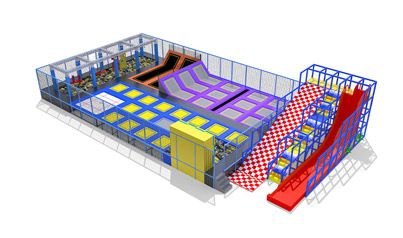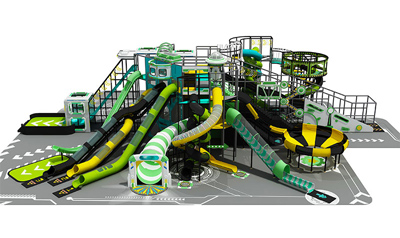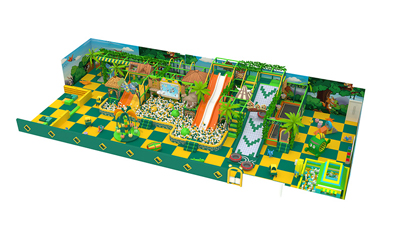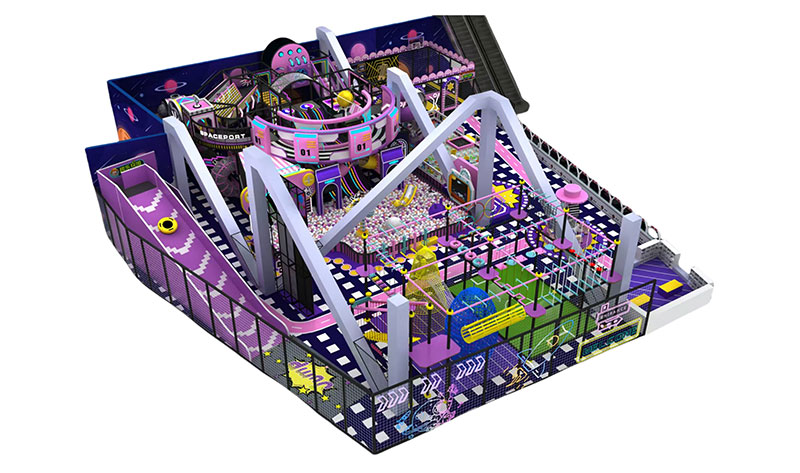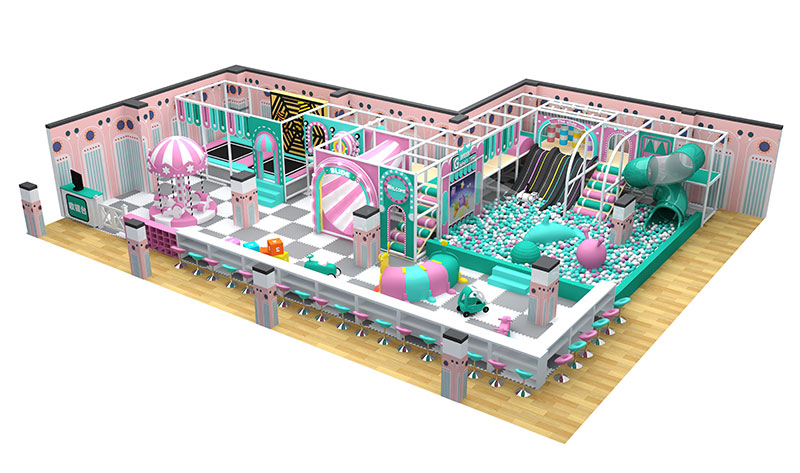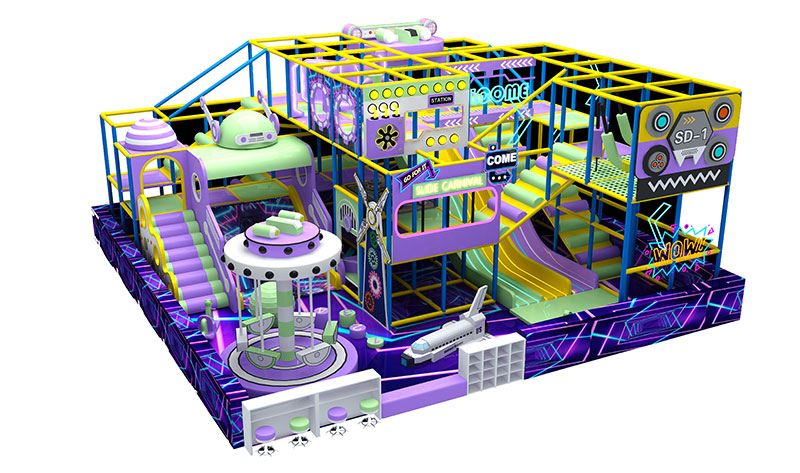Trampoline parks have become one of the most popular recreational venues, providing fun for children, teens, and adults. If you are considering opening your own indoor commercial trampoline park, proper planning and the right commercial trampoline equipment are the keys to success.
In this guide, we will walk you through the key steps to start a profitable trampoline park, including a must-have indoor commercial trampoline park equipment list, safety considerations, and business tips.
Step 1: Market Research and Business Plan
Before investing in new commercial trampoline equipment, conduct thorough market research to assess demand, competition, and pricing. Key considerations include:
1.Location selection – High-traffic areas near shopping malls, family centers, or recreational areas work best.
2.Target audience – Is your park for children, teens, fitness enthusiasts, or all ages?
3.Revenue sources – In addition to trampoline passes, consider party bookings, fitness classes, and franchising.
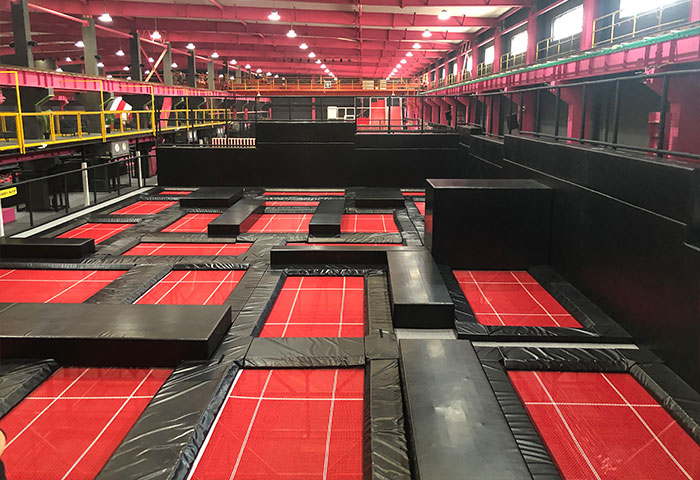
A well-developed business plan will help secure financing and guide your operations.
Step 2: Find the Right Site
The ideal trampoline park should have the following:
High ceilings (at least 14-20 feet (about 4.2-6 meters) to ensure safety)
Sufficient floor space (a medium-sized park has a floor space of 10,000-30,000 square feet)
Good ventilation and lighting
Accessibility (parking, public transportation)
Get 2kiddyplay warehouse customized solutions
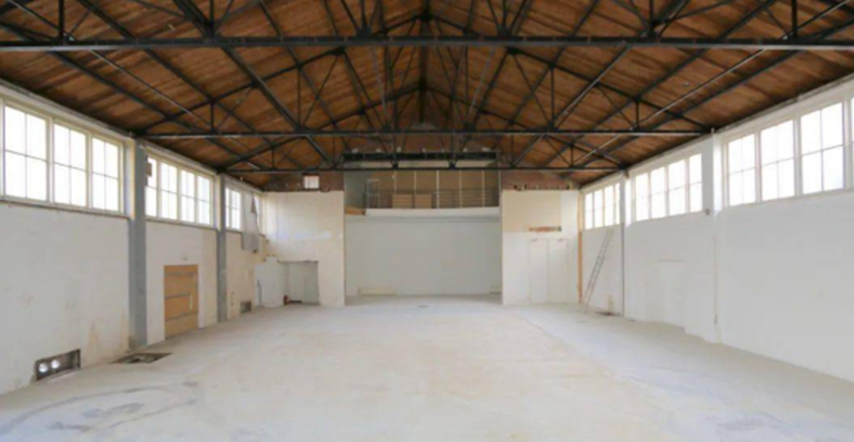
Step 3: Choose the Right Commercial Trampoline Equipment
The quality of the indoor commercial trampoline park equipment will affect safety, customer experience, and maintenance costs. Here is a must-have indoor commercial trampoline park equipment list:
1. Main Trampoline Site
Wall-to-Wall Trampolines (interconnected jumping surfaces)
Slanted Wall Trampolines (for bouncing off walls)
High-Performance Trampolines (for advanced jumps and flips)
2. Featured Attractions
Foam Pit (for safe landing after flips)
Dodgeball Court (for group play)
Ninja Warrior Course (obstacle challenge)
Basketball Dunk Area (trampolines with hoops)
Climbing Wall (with trampoline-assisted jumping)
3. Kids Area
Mini Trampolines (for younger children)
Soft Play Area (for toddlers)
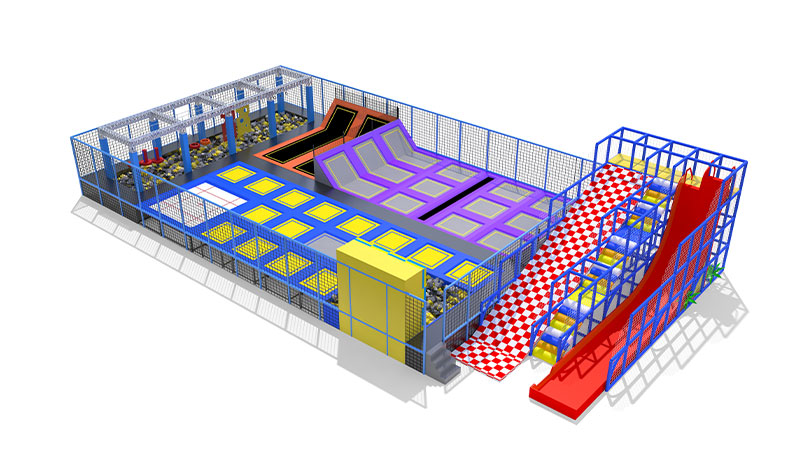
4. Support Equipment
Safety Mats and Nets (to prevent injuries)
Trampoline Frames and Springs (durable, commercial grade)
Signage and Rules Boards (for liability protection)
Purchasing new commercial trampoline equipment from a reputable supplier will ensure it lasts a long time and meets safety standards.
Step 4: Safety and Legal Compliance
Safety at your trampoline park is of utmost importance. Please follow the steps below:
Install appropriate pads and fences
Train employees on emergency procedures
Require all trampolines to be exempted
Comply with ASTM F2970-22 safety standards
Purchase liability insurance
Conclusion
Building a successful indoor commercial trampoline park requires careful planning, high-quality commercial trampoline equipment, and strong safety measures. By following this guide and investing in new commercial trampoline equipment, you can create a fun, profitable, and safe entertainment venue.
As an amusement equipment manufacturer with decades of design and development experience, we have extensive experience in custom construction of indoor amusement equipment, and have a variety of indoor and outdoor customization options to match amusement equipment according to different needs.
If you still don't know what kind of amusement equipment to choose, tell us your needs and our professionals will answer you online.


